Dakine Agent Knee Pad
Test Location: Washington; Whistler, BC
Test Duration: 3 months
Size Tested: Medium
MSRP: $110.00 USD
Intended Use: Midweight pedalable protection
Reviewer: 6’1, 160 lbs
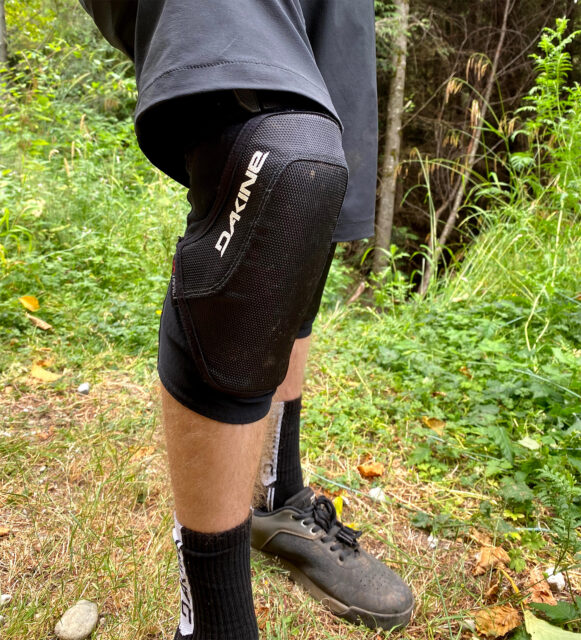
Intro
It can be quite a task to find a knee pad that strikes the right balance of pedalling comfort, breathability, and secure fit while still being adequately protective. The market is flooded with options, from ultra-slim knee sleeves to burly plastic knee cups that could quite possibly take a bullet.
Dakine has been refining its kneepad offerings for several seasons, and the Agent is a new offering that they label as “midweight.” On paper, the Agent looked like it could be a goldilocks pad — not too restrictive, not too thin — and after spending several months putting them to the test, I think they are an interesting option for the right rider.
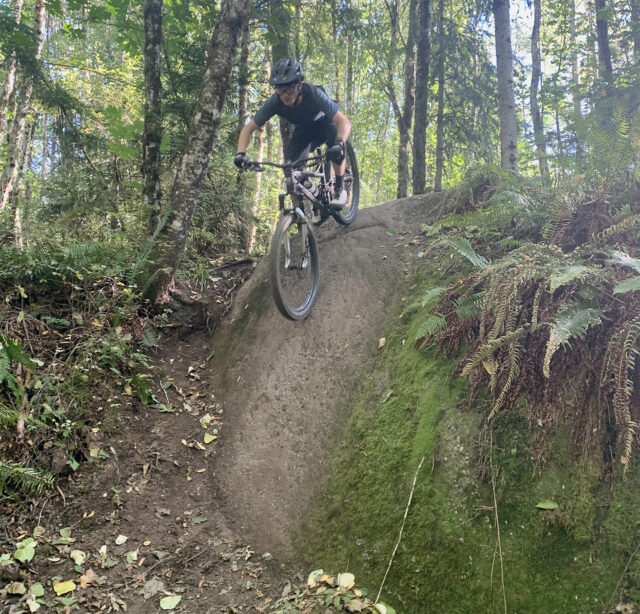
Fit
I can fairly confidently pick up a Medium knee pad from just about any manufacturer and expect that it will fit my relatively skinny legs pretty well. However, with the Agent, I found the pads surprisingly snug throughout. I was able to slip into them without undue discomfort and ultimately appreciated the form-fitting feel after a brief break-in period, but the Agent definitely runs a bit small and would warrant a trip to your LBS to try before you buy.
Putting these on for the first time, I couldn’t help but notice a couple of things. The first was the depth of the knee cup. These are relatively slim-fitting pads overall, but the shape of the cup feels nicely tailored to the shape of the knee cap and provides a deep, secure-feeling fit.
Secondly, I noticed the Agent’s extended coverage down the shin. The thick protective foam on the front of the pad extends a notable amount down the leg, offering solid protection for flat pedal riders like myself who may occasionally take a few angry pedal pins to the shins. This extended coverage also raised some questions for me around the compromise to breathability and comfort while pedalling, since I’ve found that high-coverage pads can be a compromise in those areas.
Features and Construction
With a solid roster of hard-charging freeride athletes, it makes sense that Dakine knows how to build a burly knee pad. The shell of the Agent uses a heavy-duty Cordura cover for the majority of the face of the pad and around the sides of the knee, and a neoprene stretch material through the remainder of the protective surface of the pad (which Dakine calls Ariaprene Pro). There is additional padding around the sides of the knee for more comprehensive protection, extending both above and below the knee cap. The back of the Agent features a thinner mesh to promote breathability, and the top of the pad features a wide, adjustable, elastic strap.
Like many other manufacturers, Dakine has opted for a non-Newtonian polymer for the Agent’s protective insert, which is soft while pedalling but hardens under impact. Dakine calls their material DK Impact, which they’ve now been using for several years. This latest iteration is dual-density and has a fairly soft, pliable feel.
Dakine also mentions that the Agent pads meet CE certification to the EU 2016/425 protection standard (CRITT protocol VTT-007).
Another thing I appreciate about these pads is the use of Polygiene Odor Control throughout the Agent’s materials. Knee pads can get particularly nasty over time, and I’ve found Polygiene to work quite well at controlling excessive funk.
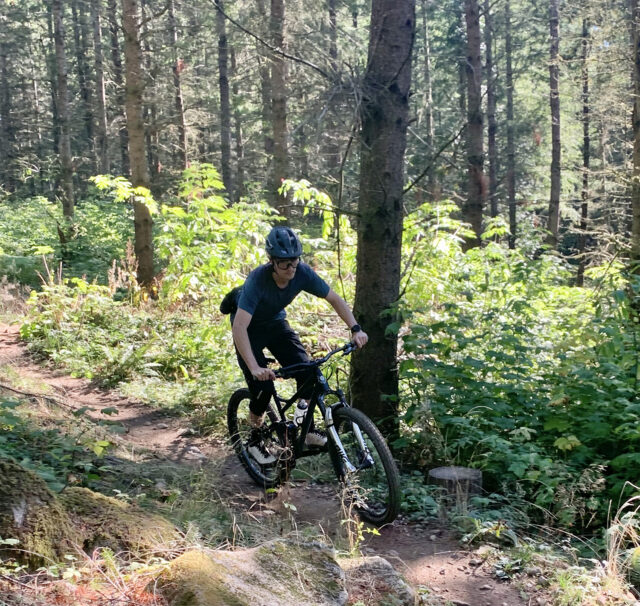
Going Up
My typical approach to climbing with knee pads is to pull them down around my ankles for the climbs, since this gives my knees a chance to breathe on big efforts. For the sake of testing, though, I wore the Agent pads in their intended place for the first few rides to see how things went.
From a comfort perspective, I was surprised to find the Agent’s pliable pad material to feel less than comfortable while pedalling. Its pre-curved knee cap fits well with a bent knee, but that pre-curve portion is hesitant to flex with the knee while straightening, causing the lower end of the pad to dig slightly into my shin while standing tall or at the bottom of the pedal stroke. This situation did not improve as the pads wore in.
After some investigation, I determined that this is attributable to the depth of the pre-curved knee cup, and paired with the lack of articulation on the sides of the cup, it doesn’t allow the pad to naturally flex with the knee.
That said, the rest of the Agent pad fit quite well — there was no bunching from the mesh at the back of the knee, and the upper thigh strap remained comfortable and secure. The seams were also adequately soft so as not to create any of the chafing that can occur when pads are new.
Another major factor with any higher-coverage pad is heat management. I found the venting on the back of the Agent to be very good, but the front of the pad would get a little swampy due to the high coverage and lack of venting in the pad material itself.
Going Down
Despite some challenges with the articulation of the Agent pads on the climbs, they are very comfortable while descending. The deep knee cup and adjustable thigh strap helped them stay secure in the roughest terrain, and they didn’t move out of place in a couple of small crashes. The same pre-curved knee cup that caused issues on the climbs matched my natural knee bend while descending almost perfectly, and the Agent pads became almost entirely unnoticeable. On occasion, I noticed that the lower lip of the pad would lift slightly away from my shin while bending my knee particularly deeply (again likely attributable to the lack of articulation in the knee cup), but it was never an issue and only really something I noticed off the bike.
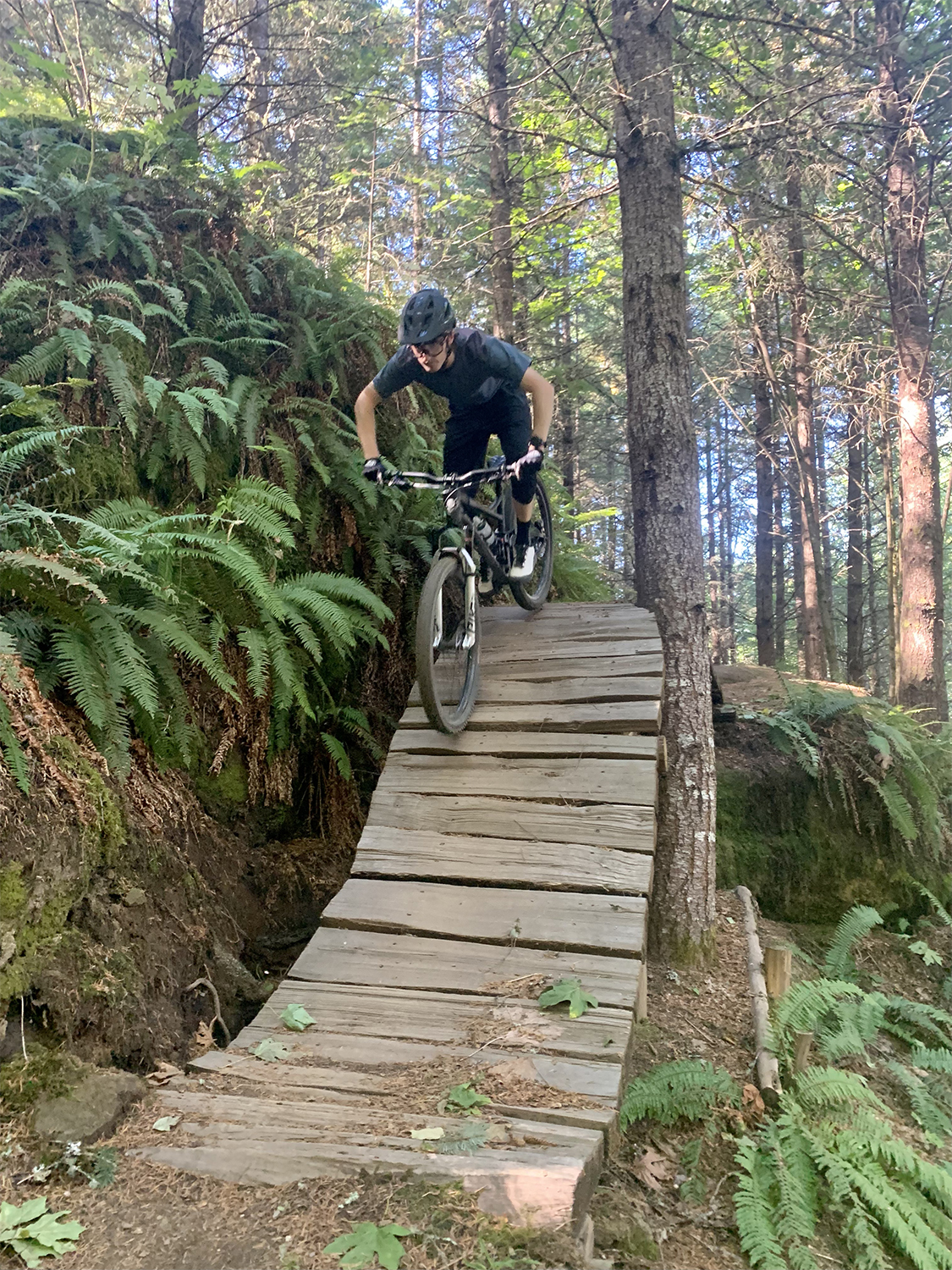
Speaking of those small crashes I mentioned, the Agent pads seem to be quite protective. The dual-density foam firms up nicely under impacts, but not overly so. I mentioned earlier how these pads don’t breathe all that well on the pad surface due to the lack of perforation or vents in the foam itself, but the benefit of that approach is that they’re very protective without notable weak spots in the primary foam pad. While I didn’t take any particularly big spills during my testing, I have full faith in their protection and often find myself reaching for them on days where I’m going to be pushing my limits in burly terrain.
Durability
The Agent pads score top marks for durability. Despite a couple of crashes, they never showed any signs of wear, and despite a lot of miles (and sweat), the seams have held up and they don’t stink. The thigh strap has also held up very well and hasn’t lost any of its elasticity (which I have experienced with some lesser-quality pads). Additionally, the Polygiene fabric treatment managed to keep the Agent pads smelling fairly fresh despite a less-than-regular washing schedule.
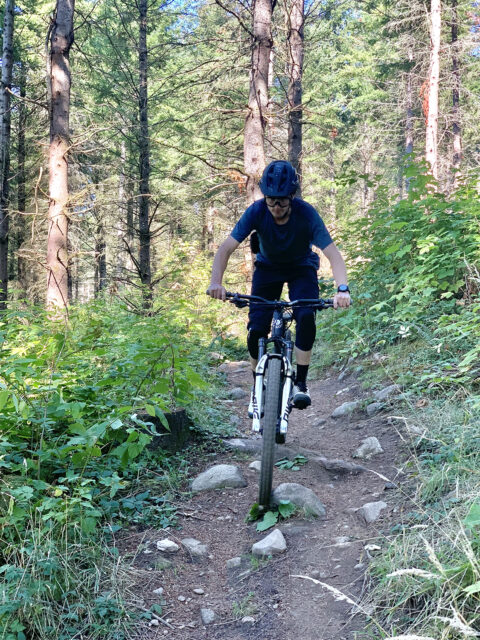
Bottom Line
Dakine’s description of the Agent as a “mid-weight” knee pad left me with a lot of initial questions as to how they would balance protection and pedalling performance. After a few months using them, it’s clear that Dakine has leaned towards the former.
Despite possibly creating some sizing issues for some riders, the Agent’s snug fit and hefty coverage make them one of the most secure and protective pads I’ve used. Dakine’s DK Impact foam works well, and the pads want to stay put under impact. The tradeoff for the rock-solid coverage is that they don’t necessarily pedal all that well. At the same time, the pre-curved fit is almost perfect for an aggressive descending stance, making them very comfortable heading back down the hill.
Despite any plastic protection, I would put the Agent in the camp of more aggressive, gravity-oriented pads. I found myself appreciating the Agents most during a day in the Whistler Bike Park, where I was able to log over 20K vertical feet of descending without once adjusting the pads.
For riders who like to earn their turns, the added protection offered by the Agents does have a comfort tradeoff while pedalling. That being said, folks who ride in particularly nasty terrain or who spend a lot of time shuttling and riding bike parks will get along very well with the Agents, and the solid durability and anti-stink fabric treatment should see them lasting for years.
